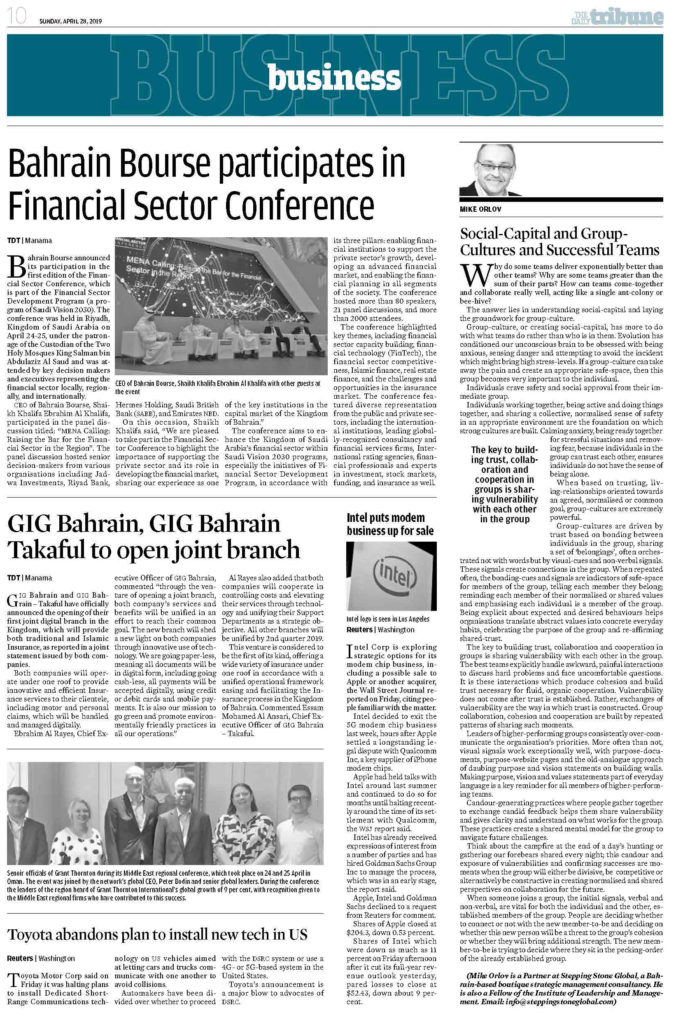
Why do some teams deliver exponentially better than other teams? Why are some teams greater than the sum of their parts? How can teams come-together and collaborate really well, acting like a single ant-colony or bee-hive?
The answer lies in understanding social-capital and laying the groundwork for group-culture.
Group-culture, or creating social-capital, has more to do with what teams do rather than who is in them. Evolution has conditioned our unconscious brain to be obsessed with being anxious, sensing danger and attempting to avoid the incident which might bring high stress-levels. If a group-culture can take away the pain and create an appropriate safe-space, then this group becomes very important to the individual.
Individuals crave safety and social approval from their immediate group.
Individuals working together, being active and doing things together, and sharing a collective, normalised sense of safety in an appropriate environment are the foundation on which strong cultures are built. Calming anxiety, being ready together for stressful situations and removing fear, because individuals in the group can trust each other, ensures individuals do not have the sense of being alone.
When based on trusting, living-relationships oriented towards an agreed, normalised or common goal, group-cultures are extremely powerful.
Group-cultures are driven by trust based on bonding between individuals in the group, sharing a set of ‘belongings’, often orchestrated not with words but by visual-cues and non-verbal signals. These signals create connections in the group. When repeated often, the bonding-cues and signals are indicators of safe-space for members of the group, telling each member they belong; reminding each member of their normalised or shared values and emphasising each individual is a member of the group. Being explicit about expected and desired behaviours helps organisations translate abstract values into concrete everyday habits, celebrating the purpose of the group and re-affirming shared-trust.
The key to building trust, collaboration and cooperation in groups is sharing vulnerability with each other in the group. The best teams explicitly handle awkward, painful interactions to discuss hard problems and face uncomfortable questions. It is these interactions which produce cohesion and build trust necessary for fluid, organic cooperation. Vulnerability does not come after trust is established. Rather, exchanges of vulnerability are the way in which trust is constructed. Group collaboration, cohesion and cooperation are built by repeated patterns of sharing such moments.
Leaders of higher-performing groups consistently over-communicate the organisation’s priorities. More often than not, visual signals work exceptionally well, with purpose-documents, purpose-website pages and the old-analogue approach of daubing purpose and vision statements on building walls. Making purpose, vision and values statements part of everyday language is a key reminder for all members of higher-performing teams.
Candour-generating practices where people gather together to exchange candid feedback helps them share vulnerability and gives clarity and understand on what works for the group. These practices create a shared mental model for the group to navigate future challenges.
Think about the campfire at the end of a day’s hunting or gathering our forebears shared every night; this candour and exposure of vulnerabilities and confirming successes are moments when the group will either be divisive, be competitive or alternatively be constructive in creating normalised and shared perspectives on collaboration for the future.
When someone joins a group, the initial signals, verbal and non-verbal, are vital for both the individual and the other, established members of the group. People are deciding whether to connect or not with the new member-to-be and deciding on whether this new person will be a threat to the group’s cohesion or whether they will bring additional strength. The new member-to-be is trying to decide where they sit in the pecking-order of the already established group.
